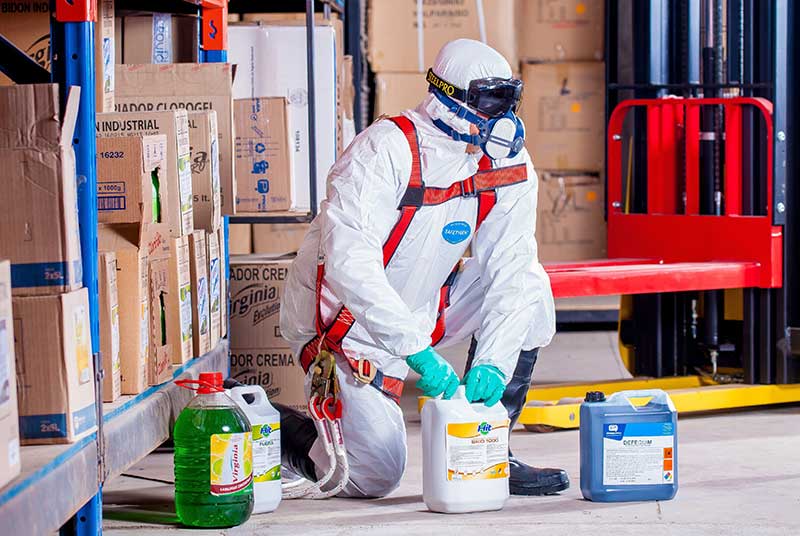Sun Valley Manufacturing Uses Many
Sun Valley residents like Jose Mier know that our community is home to a good amount of manufacturing. Because of that we have to be cautious when it comes to hazardous chemicals in our area. The following is an overview of hazardous chemicals we deal with on a daily basis.

Materials that are very hazardous to home, health or the environment (extremely poisonous gas, explosive, highly water reactive, and pyrophoric products for example) should not be acquired up until the essential authorizations, administrative, engineering and environmental protections are in place.
Dangerous products must be kept and used in accordance with many policies consisting of, however not limited to, the Uniform Fire Code and local changes.
Authorizations are required for any quantity of highly harmful material, and for little to moderate amounts of other products. (For example, a permit is needed for any quantity of unstable or highly harmful material and for flammable liquids in amounts in excess of 5 gallons in a building).
Contact the Fire Department directly or EH&S Facility Safety office (206.543.0465) for help.
Spaces where hazardous products are saved or utilized in amounts that go beyond certain thresholds, and rooms devoted to saving dangerous materials are needed to have a National Fire Protection Association (NFPA) diamond indication on all doors. Call EH&S Facility Safety office at 543-0465 for additional details and indications.
Combustible Liquids: The amount of combustible liquids in a single lab saved outside of an approved flammable liquids cabinet need to not go beyond 10 gallons. All 10 gallons, unless in use, must be stored in authorized containers as indicated in the table listed below.
Peroxide Forming Chemicals: Peroxides might form in some organic compounds by autoxidation. Peroxides can cause major mishaps and, in some situations, end up being low power explosives that can be set off by shock, sparks or other kinds of ignition. Some organic substances form peroxides in a matter of months under the ideal situation. Know organic compounds in your laboratory and remember to mark the expiration date on each container and review them occasionally for disposal. Ether is an example of peroxide forming chemical.
Pyrophoric Material: Pyrophoric product is a product that will spontaneously fire up when it comes into contact with air. This material is only permitted in fire sprinkler protected laboratories in extremely little amounts (4 pounds aggregate per zone). Potassium metal is an example of a pyrophoric material. Extreme safety measure is required when working with this type of material.
Highly Toxic Material: Materials classified as extremely poisonous are just allowed in little amounts in University buildings (Up to 10 pounds per zone). Highly toxic gas, like Arsine, is not allowed in any amount without engineering controls and an unique permit from the Seattle Fire Department.
Incompatible Materials: Incompatible products are materials which, when they come in contact with each other, have the potential to respond in a manner that generate fumes, heat, gases, or byproducts which are dangerous. For amounts of greater than 5 pounds or 1/2 gallon, separation by not less than 20 feet, approved cabinets, or a noncombustible partition is required. Smaller amounts must likewise be isolated whenever practical. A typical infraction is combustible liquids kept with oxidizers.
Flammable Liquids and Basements: The International Fire Code prohibits storage of combustible liquids in basements. Nevertheless, there are 2 general exceptions as follows that use to the University of Washington:
Existing grandfathered Occupancy rooms designated Class H (i.e., chemical storerooms style in particular for bulk storage of inflammable liquids). New Class H occupancy spaces for flammable liquids are not allowed in basements.
Your waste will be picked up in two to 4 weeks. Please strategy ahead and be patient. Each waste product must be tracked from the point of generation to incineration, and we do the documents for hundreds of containers of waste each week. Chemicals that are corrosive, flammable, poisonous, or dynamite are by legal meaning “hazardous”. Some extra chemicals are handled as contaminated materials because they are carcinogenic, persistent in the environment, or are not allowed the garbage because they generate dusts or other risk. Large volumes of waste or varieties of containers may take longer to gather due to the long time it requires to process the chemicals (it normally takes an hour to process one Chemical Collection Request) and the restricted area on our trucks. Because much of the paperwork is done already, routine collection requests are much faster. If your waste is built up improperly (according the above standards), we will stop to discuss the problem with you if you are present. We will not pick up your waste till the issue has actually been corrected.
All brand-new staff members in addition to anyone rusty on the basics of contaminated materials management ought to take this training. It covers contaminated materials definitions, labeling, disposal, and storage and consists of a brief test, all of which must take just ten to twenty minutes to complete. If you pass the quiz, you might ask for a certificate of completion for your training records at any job that you are working at.
Rooms where dangerous products are kept or utilized in quantities that go beyond particular thresholds, and spaces committed to storing dangerous materials are needed to have a National Fire Protection Association (NFPA) diamond sign on all doors. This product is only allowed in fire sprinkler protected laboratories in really small amounts (4 pounds aggregate per zone). Potassium metal is an example of a pyrophoric material. Chemicals that are corrosive, flammable, hazardous, or dynamite are by legal meaning “hazardous”. Some additional chemicals are handled as hazardous waste since they are carcinogenic, persistent in the environment, or are not enabled in the garbage due to the fact that they produce dusts or other hazard.